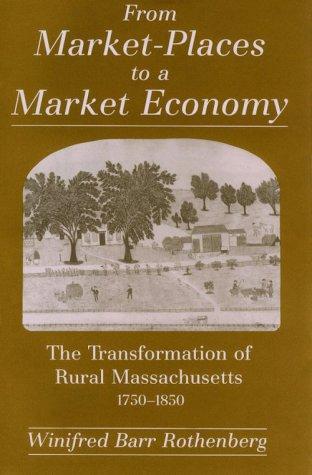We note briefly that the premise of Rothenberg's thesis clearly depends on the widespread prevalence of local regulatory regimes of both product and labor markets in the 18th century, particularly the early 18th century (given that her observation of increasing market integration begins around 1750). To support that thesis, she draws primarily on quantitative data. Further qualitative support is found in the so-called "Whig" historiography of the American Revolution, of which the quintessential proponent is Gordon Wood's Radicalism of the American Revolution (1992).
For Wood, the American Revolution was radical in its assertion of a popular basis for politics. For Joyce Appleby, a scholar writing along similar lines, its importance for political economy was in its emphasis on liberalism as an economic philosophy -- stressing private property rights, enforceable contract, economic independence, and a laissez-faire theory of government policy. A corollary of this thesis is the rise of a free market mentalitie, as Rothenberg put it -- a rise in the value of free markets and trade for mutual gain among the newly democratic society. Rothenberg finds quantitative evidence of this assertion in the regional convergence of market prices for various agricultural goods as well as the rise of contract labor in the Northeast in the late-18th and early-19th centuries. Her analysis draws from account books, diaries, and prices taken from newspapers. A key aspect of her thesis is the rise of free contract labor and free labor more generally, as distinct from the coercive institutions of the early 18th century. The question to be answered there is, Did the American Revolution give rise to what we would eventually see as the "free labor" necessary to fuel the fire of the Industrialization of the North? Rothenberg answers with a resounding "Yes". Others have their reservations.
Writing from a different perspective, Morton Horwitz's 1977 Transformation in American Law had a chapter on contract law which suggested (but did not prove) a counter-hypothesis. Sifting through court records and treatises he finds that not only was labor subject to a set of legal controls in the early 19th century significantly curtailing its freedom to contract and its mobility, but that the law exhibited a clear class bias against the worker and in favor of entrepreneurship. Taking issue with Horwitz's thesis in her own 25-year-later reconsideration (published on EH.net here) of Transformation she shows how many of the claims of class bias and worker unfreedom in Horwitz have not withstood more recent, closer examinations of the actual application (or more appropriately, lack thereof) of some of the seminal labor cases upon which Horwitz relies. (See Karsten's Head versus Heart for a good summary of right-to-quit law in the Northeast.)
| Time to put race at the center of labor history in the U.S. instead of unfree white labor? |
In the next part of the series, we will see how recent historical research has questioned precisely the points mentioned in the previous paragraph, seriously calling into question whether labor developed along an essentially government-free trajectory in the early Republic.

This book inspired me to pursue economic history, so I'm very interested in reading the rest of your critique.
ReplyDeleteThanks for your comment :) Rothenberg was very inspiring to me as well. Her analysis is very well done, so it takes some time to get to her weaknesses. We will get there soon... :)
ReplyDelete